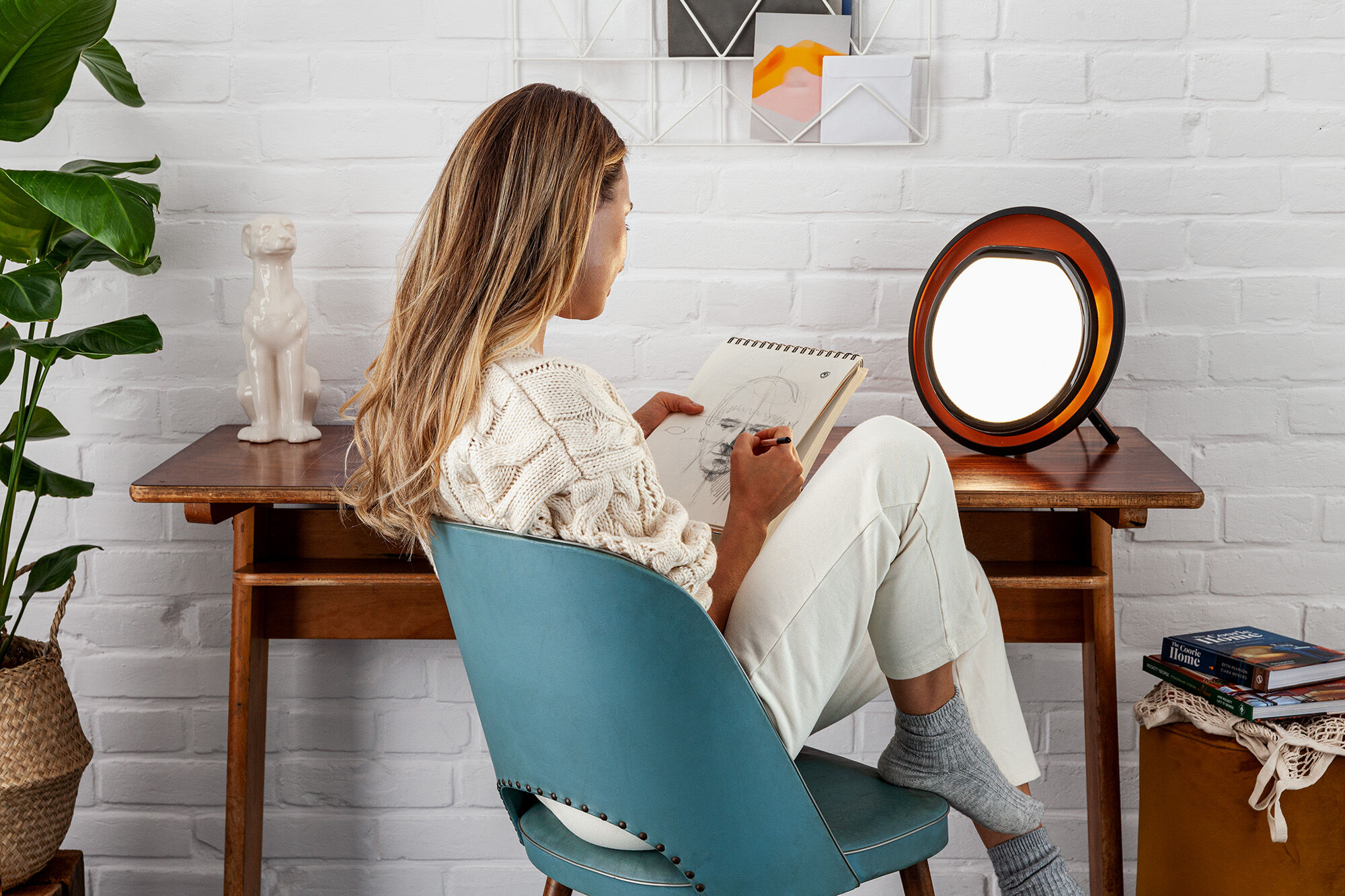Light Therapy for Winter Blues

• Sleep problems - oversleeping but not feeling refreshed, struggling to get out of bed, needing a nap in the afternoon
• Overeating - craving carbohydrate-rich meals often leading to weight gain
• Depression, despair, misery, guilt, anxiety - normal tasks become frustratingly difficult
• Lethargy - feeling washed out and too tired to cope, everything feels like an effort
• Family / social problems - avoiding company, irritability, loss of libido, feeling emotionally 'numb'
• Physical symptoms - often joint pain or stomach problems, lowered resistance to infection
Dr Norman E. Rosenthal, a psychiatrist and scientist who in the 1980s first described and thoroughly researched winter depression, noted that there are three keys to the development of SAD, namely (1) inherent vulnerability, (2) environment (light deprivation specifically) and (3) stress. Moreover, the two key neurotransmitter systems (serotonin and dopamine) as well as the hormone melatonin may be responsible for the disturbances experienced by those affected by SAD. Dopamine and serotonin are both naturally occurring chemicals in the body that have roles in a person's mood and well-being. Serotonin is sometimes called the ‘happy chemical’ and it is thought to regulate mood and emotions, as well as appetite, digestion and other motor, cognitive, and autonomic functions.
This explains why on gloomy and dark days many of us crave serotonin-boosting carbohydrate-rich meals. Dopamine on the other hand is, among other, responsible for the movements a person makes as well as their emotional responses. A dopamine imbalance, even if occurring seasonally, can manipulate our motivation, memory, feelings of pleasure or enjoyment as well as negatively affect our social life and human interaction in general. And then there is the sleep hormone, melatonin. Since light halts the secretion of melatonin and regulates the sleep/wake cycle, short and dark days can lead to circadian rhythm disruptions, causing feelings of sluggishness, sleepiness and lack of energy.
Dr Rosenthal pioneered the use of light therapy as a form of treatment for SAD, which, given the influence light has on melatonin secretion and the key neurotransmitters, seemed almost an obvious treatment to look into. “The basic principle involved in light therapy is to replace the light that is missing and help a person with SAD feel more energetic and cheerful, more like he or she feels during the summer”, writes Rosenthal. Light therapy suppresses melatonin secretion – either by helping you wake up gently with sunrise simulation, or to combat the feelings of sluggishness during the day with bright light emitted by a light therapy lamp.
Although it varies from person to person, most people feel the effects of light therapy within two to four days of starting treatment. Some people feel the difference within their very first session! The best time of day for bright light therapy is early in the morning, just after waking, or straight after getting to work. In most cases, 30 minutes in front of a light therapy lamp will suffice, provided a genuine light therapy device is used.
It’s worth noting that in the darkest depth of winter, it may be a good idea to stick to light therapy every single day. While skipping a day here or there isn't the end of the world, it is recommended to keep on using bright light therapy daily in order to prevent the return of winter blues symptoms. For best effects, use both a sleep/wake-up light and a light therapy lamp. The two devices work very well together, however if you struggle with winter blues and have to choose between the two to begin with, a bright light therapy lamp is probably the better choice.
• Finding ways to get more light naturally: perhaps planing a winter getaway to a sunny country or making a point of always taking a walk at lunchtime.
• Engaging in regular aerobic exercise has been shown to boost serotonin and dopamine levels; even better if one can plan to do a workout outdoors during daylight hours!
• Eating a well-balanced diet and keep regular mealtimes to avoid being overwhelmed by cravings.
• Taking a vitamin D supplement; In the UK alone, around 10 million people are said to be deficient in vitamin.
• Finding ways to manage your stress better, perhaps through daily meditation, committing to regular digital detoxes or practicing breathwork at bedtime
• Starting psychotherapy.
• Taking antidepressants; if this is the option you're considering, book an appointment to speak to your doctor.
